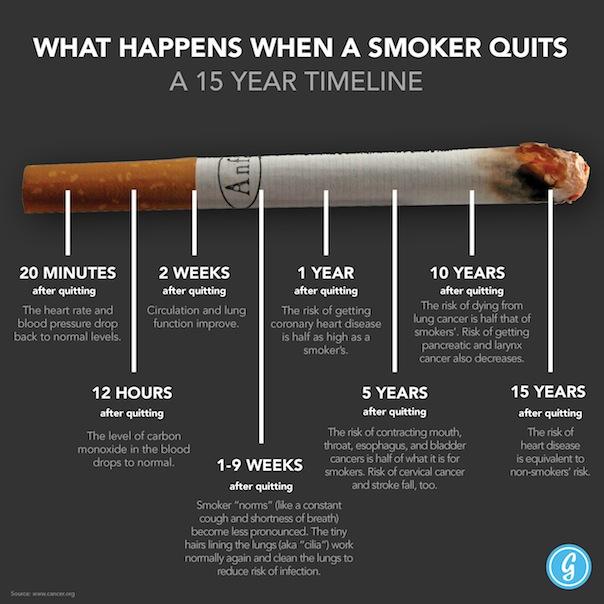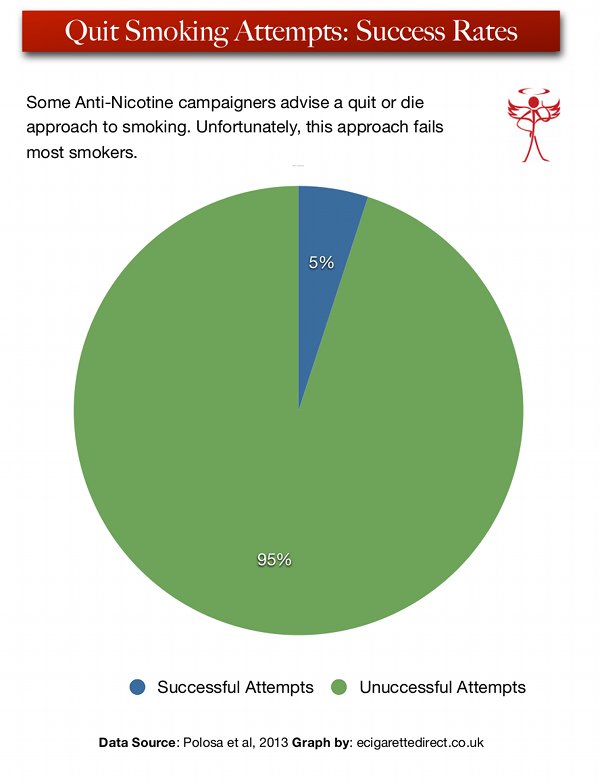
How dangerous is vaping compared to smoking?
Vaping is safer than smoking cigarettes! However, it doesn’t change the fact that you are still inhaling a lot of bad stuff into your lungs. Vapes contain A LOT LESS chemicals than your traditional nicotine cigarette. When smoking a cigarette, you’re smoking a lot of stuff, including Carbon Monoxide, which can harm your blood cells.
Why is vaping now more dangerous than smoking cigarettes?
Vaping may be worse for you than traditional smoking, a new study claims. Greek researchers found that flavorings in e-cigarettes harm the lungs by causing inflammation. Experiments, conducted on...
What is more harmful vape or smoking?
Which is more harmful, vaping or smoking? Smoking is definitely more harmful as carbon monoxide and tar are by-products of tobacco combustion, and studies have shown that vaping is 95% less harmful than smoking.
Is vaping actually healthier for you than smoking?
Some people believe vaping is safer than smoking because it doesn’t involve inhaling smoke. But the reality is, when it comes to vaping marijuana, there’s much less known about the negative health effects. The most recent research suggests vaping THC oil could be quite harmful to lung health.

How addictive are e-cigarettes?
E-cigarettes are often considered less addictive than traditional cigarettes. This study aimed to assess patterns of e-cigarette use and to compare nicotine dependence among cigarette and e-cigarette users in a group of highly educated young adults. From 3002 healthy adults, a representative group of 30 cigarette smokers, 30 exclusive e-cigarette users, and 30 dual users were recruited. A 25-item questionnaire was used to collect information related to the patterns and attitudes towards the use of cigarettes and e-cigarettes. The Fagerström test for nicotine dependence (FTND) and its adapted version for e-cigarettes were used to analyze nicotine dependence in each of the groups. The nicotine dependence levels measured with FTND were over two times higher among e-cigarette users (mean 3.5) compared to traditional tobacco smokers (mean 1.6; p< 0.001). Similarly, among dual users, nicotine dependence levels were higher when using an e-cigarette (mean 4.7) compared to using traditional cigarettes (mean 3.2; p= 0.03). Habits and behaviors associated with the use of e-cigarettes did not differ significantly (p> 0.05) between exclusive e-cigarette users and dual users. The findings suggest that e-cigarettes may have a higher addictive potential than smoked cigarettes among young adults.
Why did we conduct a study on e-cigarettes?
Due to uncertainty about the dependency potential of e-cigarettes, we decided to carry out a study aimed to: (1) assess the patterns of e-cigarette use by exclusive e-cigarette users and dual users and (2) compare nicotine dependence levels among young adults who use cigarettes or e-cigarettes. We chose to examine the problem in a highly educated group of university students under the assumption that their perception is less biased by commonly held beliefs and stereotypes of e-smoking safety and addiction mechanisms.
How much nicotine is in e-liquid?
Habits and behaviors associated with the use of e-cigarettes, including nicotine content in the e-liquid, e-liquid consumption, type of e-liquid used, and the number of e-cigarettes used, did not differ significantly (p> 0.05) between e-cigarette users and dual users. Users of e-cigarettes (n= 60) consumed an average of 4.2 mL of e-liquid per day, with the most frequently chosen e-liquid being that containing 6 mg of nicotine in 1 mL of e-liquid. None of the subjects used nicotine free e-liquids. The study population was dominated by individuals who prepared e-liquids themselves: 66.7% of e-cigarette users and 74.1% of dual users (Table 1). Over half (52.7%) of the e-cigarette users (53.6% of exclusive e-cigarette users and 51.9% dual users; p= 0.9) had chosen devices that allow technical modifications of the e-cigarette such as voltage, power, and resistance of the heater.
Is e-cigarette more addictive than traditional cigarettes?
E-Cigarettes are More Addictive than Traditional Cigarettes— A Study in Highly Educated Young People
Is nicotine addictive?
Nicotine is a highly addictive substance and adolescents and young adults may be at high risk of addiction [1,2]. Nicotine withdrawal effects such as irritability, anxiety, poor concentration, memory impairment, and insomnia can occur after cessation of chronic nicotine use [3]. In addition, exposure to nicotine in adolescence may have adverse affects on the adolescent brain, with postulated risks including impaired memory and attention, increased risk of substance abuse, and addiction and poor academic performance [4,5,6].
What is vaping in teens?
Vaping involves breathing in an aerosol that contains several chemicals, including nicotine and flavoring, through an e-cigarette or other device. A 2018 survey found that vaping is growing in popularity among teenagers.
How many people died from vaping in 2020?
Trusted Source. , by early 2020, there had been a total of 2,807 hospitalizations or deaths from vaping. However, the CDC also acknowledge that since the removal of vitamin E acetate from vaping products, along with other harmful ingredients, the number of symptoms that people experience from vaping has declined.
Is vaping safer than smoking?
According to Johns Hopkins Medicine, vaping may be slightly less harmful than smoking. They note that a person who smokes inhales about 7,000 chemicals, whereas vaping likely involves a lower number of chemicals.
Is vaping dangerous?
Vaping also delivers several dangerous chemicals, including diacetyl, cancer-causing chemicals, heavy metals, and volatile organic compounds (VOCs). Vaping may normalize smoking again as it becomes more popular. , by early 2020, there had been a total of 2,807 hospitalizations or deaths from vaping.
Is vaping a good alternative to smoking?
Scientists do not fully understand the long-term health effects of electronic cigarettes (e-cigarettes) yet, but the science indicates that they are not a safe alternative to smoking. Vaping involves breathing in an aerosol that contains several chemicals, including nicotine and flavoring, ...
Does vaping cause cancer?
Vaping can: damage the lungs. release free radicals into the body, which promote cancer development. weaken the immune system. delay brain development in fetuses, children, and teenagers. Future studies will likely show that vaping has additional long-term health effects that scientists have not yet discovered.
Can you use vaping to quit smoking?
People should not use vaping to quit smoking. Instead, they can use FDA-approved methods. A person who would like more advice about quitting can speak to their doctor.
How much nicotine is in a vape?
Based on one’s method of smoking and the cigarette itself, as little as one milligram of nicotine is generally derived from a cigarette. That means cigarettes are only about 8% effective. So, what’s normal in a vape? 5mg. On the surface that might appear better than traditional cigarettes but the devil in the details is the effectiveness. Using data from Juul, their devices are about 50% effective for the distribution of nicotine.So, the average cigarette delivers 1 mg of nicotine and the average vape equivalent delivers 2.5 mg of nicotine.
How long does it take for nicotine to work?
The effects of Nicotine are completely realized within 10 minutes, meaning that it’s typical to desire more as regularly as every ten minutes. That’s why nicotine is rated as the third most addictive drug.
Why do young people use e-cigarettes?
Many young people say they’ve tried e-cigarettes in part because of the appealing flavors. More than 80% of teen users say their first e-cigarette product was flavored.
What do tobacco companies want to do?
Tobacco companies want to hook a new generation on nicotine and smoking.
How old do you have to be to sell e-cigarettes?
Enforce the new federal law that raised the minimum age for sale of tobacco products from 18 to 21 years.
Is vaping bad for health?
E-cigarettes’ biggest threat to public health may be this: The increasing popularity of vaping may “re-normalize” smoking, which has declined for years. Reversing the hard-won gains in the global effort to curb smoking would be catastrophic. Smoking is still the leading preventable cause of death and is responsible for 480,000 American lives lost each year.
Is vaping harmful to you?
The American Heart Association recommends proven methods to successfully quit smoking. Many people think vaping is less harmful than smoking.
Can vaping harm a pregnant woman?
Most e-cigarettes deliver nicotine, which is highly addictive and can harm the developing brains of teens, kids and fetuses in women who vape while pregnant. Some types expose users to even more nicotine than traditional cigarettes.
Can you use e-cigarettes if you don't smoke?
People who do not currently smoke or use tobacco products should not use e-cigarettes.
Why is vaping so addictive?
Because vaping doesn’t have the bad smells associated with cigarettes, people can smoke them in more areas, further decreasing traditional barriers to nicotine use. Method of Use. Some types of vaping devices can deliver more nicotine than traditional cigarettes, which is another reason they may be more addictive.
Why do people vape?
Using vaping to cope with stress. Using a vape device even when it causes negative health-related side effects or problems in your life. Drinking more water than usual. Difficulty breathing or other respiratory complications. Changes in mood and behavior, such as anxiety, depression or irritability.
Why do vapes burn?
One reason is that many vape device liquids contain flavoring in addition to nicotine. These flavorings are more palatable and don’t come with the burning sensation or the taste of cigarettes, making people more likely to vape more frequently. Over time, this means increased exposure to nicotine. Ease of Use.
How many cigarettes are in a Juul pod?
These devices are tiny and highly portable, plus you don’t have to worry about carrying a lighter or matches. According to doctors, one Juul pod is equivalent to 20 cigarettes, or one full pack. Using a Juul pod is much easier than taking out a cigarette, getting a lighter, and lighting a cigarette.
Does vaping replace cigarettes?
According to the Truth Initiative, there are patterns that show that, when it comes to adults and vaping, some are supplementing their use of traditional cigarettes with vaping, rather than replacing their cigarette use entirely. Common signs & symptoms of vaping addiction: Using vaping to cope with stress.
Is vaping bad for you?
Now, vaping has turned into a serious public health situation, and many are warning against its potentially harmful effects, particularly for young people.
Can vaping cause irritation?
For example, vaping without nicotine can still lead to irritation of the mouth and airways. It can also trigger an inflammatory response in the lungs.
